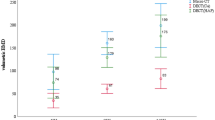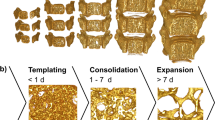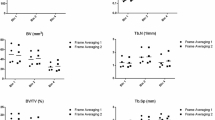Abstract
Microcomputed tomography (microCT) analysis is a powerful tool for the evaluation of bone tissue because it provides access to the 3D microarchitecture of the bone. It is invaluable for regenerative medicine as it provides the researcher with the opportunity to explore the skeletal system both in vivo and ex vivo. The quantitative assessment of macrostructural characteristics and microstructural features may improve our ability to estimate the quality of newly formed bone. We have developed a unique procedure for analyzing data from microCT scans to evaluate bone structure and repair. This protocol describes the procedures for microCT analysis of three main types of mouse bone regeneration models (ectopic administration of bone-forming mesenchymal stem cells, and administration of cells after both long bone defects and cranial segmental bone defects) that can be easily adapted for a variety of other models. Precise protocols are crucial because the system is extremely user sensitive and results can be easily biased if standardized methods are not applied. The suggested protocol takes 1.5–3.5 h per sample, depending on bone tissue sample size, the type of equipment used, variables of the scanning protocol and the operator's experience.
This is a preview of subscription content, access via your institution
Access options
Subscribe to this journal
Receive 12 print issues and online access
$259.00 per year
only $21.58 per issue
Buy this article
- Purchase on Springer Link
- Instant access to full article PDF
Prices may be subject to local taxes which are calculated during checkout




Similar content being viewed by others
References
Kimelman, N., Pelled, G., Gazit, Z. & Gazit, D. Applications of gene therapy and adult stem cells in bone bioengineering. Regen. Med. 1, 549–561 (2006).
Holdsworth, D.W. & Thornton, M.M. Micro-CT in small animal and specimen imaging. Trends Biotechnol. 20, S34–S39 (2002).
Umoh, J.U. et al. In vivo micro-CT analysis of bone remodeling in a rat calvarial defect model. Phys. Med. Biol. 54, 2147–2161 (2009).
Yeung, H. et al. Protocols of micro-computed tomographic analysis established for musculoskeletal applications. In A Practical Manual for Musculoskeletal Research (eds. Leung, K., Qin, L. & Cheung, W.) 279–300 (World Scientific Publishing, Singapore, 2008).
Kallai, I. et al. Quantitative, structural, and image-based mechanical analysis of nonunion fracture repaired by genetically engineered mesenchymal stem cells. J. Biomech. 43, 2315–2320 (2010).
Kimelman-Bleich, N. et al. The use of a synthetic oxygen carrier-enriched hydrogel to enhance mesenchymal stem cell-based bone formation in vivo. Biomaterials 30, 4639–4648 (2009).
Pelled, G. et al. Structural and nanoindentation studies of stem cell-based tissue-engineered bone. J. Biomech. 40, 399–411 (2007).
Steinhardt, Y. et al. Maxillofacial-derived stem cells regenerate critical mandibular bone defect. Tissue Eng. Part A 14, 1763–1773 (2008).
Zilberman, Y. et al. Fluorescence molecular tomography enables in vivo visualization and quantification of nonunion fracture repair induced by genetically engineered mesenchymal stem cells. J. Orthop. Res. 26, 522–530 (2008).
Moutsatsos, I.K. et al. Exogenously regulated stem cell-mediated gene therapy for bone regeneration. Mol. Ther. 3, 449–461 (2001).
Turgeman, G. et al. Engineered human mesenchymal stem cells: a novel platform for skeletal cell mediated gene therapy. J. Gene Med. 3, 240–251 (2001).
Tai, K. et al. Nanobiomechanics of repair bone regenerated by genetically modified mesenchymal stem cells. Tissue Eng. Part A 14, 1709–1720 (2008).
Gafni, Y. et al. Gene therapy platform for bone regeneration using an exogenously regulated, AAV-2-based gene expression system. Mol. Ther. 9, 587–595 (2004).
Hildebrand, T., Laib, A., Muller, R., Dequeker, J. & Ruegsegger, P. Direct three-dimensional morphometric analysis of human cancellous bone: microstructural data from spine, femur, iliac crest, and calcaneus. J. Bone Miner. Res. 14, 1167–1174 (1999).
Bouxsein, M.L. et al. Guidelines for assessment of bone microstructure in rodents using micro-computed tomography. J. Bone Miner. Res. 25, 1468–1486 (2010).
Odgaard, A. & Gundersen, H.J. Quantification of connectivity in cancellous bone, with special emphasis on 3-D reconstructions. Bone 14, 173–182 (1993).
Acknowledgements
We acknowledge funding from the National Institutes of Health grant nos. R01AR056694 and R01DE019902 and from the Telemedicine and Advanced Technology Research Center (TATRC), U.S. Army Medical Research and Materiel Command No. 08217008 (W.T., Z.G., G.P. and D.G.).
Author information
Authors and Affiliations
Contributions
I.K. developed the concept, designed the protocol and contributed to writing the manuscript. O.M. provided helpful comments during the development of the protocol and contributed to writing the manuscript. W.T. provided technical support and conceptual advice. G.P. provided helpful comments and contributed to writing the manuscript. Z.G. and D.G. supervised the project. All authors discussed the implications of the protocol and commented on the manuscript at all stages.
Corresponding author
Ethics declarations
Competing interests
The authors declare no competing financial interests.
Supplementary information
Supplementary Method
Detailed IPL Command Lines (PDF 107 kb)
Rights and permissions
About this article
Cite this article
Kallai, I., Mizrahi, O., Tawackoli, W. et al. Microcomputed tomography–based structural analysis of various bone tissue regeneration models. Nat Protoc 6, 105–110 (2011). https://doi.org/10.1038/nprot.2010.180
Published:
Issue Date:
DOI: https://doi.org/10.1038/nprot.2010.180
This article is cited by
-
Allolobophora caliginosa coelomic fluid and extract alleviate glucocorticoid-induced osteoporosis in mice by suppressing oxidative stress and regulating osteoblastic/osteoclastic-related markers
Scientific Reports (2023)
-
Mutations in ARHGEF15 cause autosomal dominant hereditary cerebral small vessel disease and osteoporotic fracture
Acta Neuropathologica (2023)
-
iPSC-neural crest derived cells embedded in 3D printable bio-ink promote cranial bone defect repair
Scientific Reports (2022)
-
Human fetal whole-body postmortem microfocus computed tomographic imaging
Nature Protocols (2021)
-
Decompression effects on bone healing in rat mandible osteomyelitis
Scientific Reports (2021)
Comments
By submitting a comment you agree to abide by our Terms and Community Guidelines. If you find something abusive or that does not comply with our terms or guidelines please flag it as inappropriate.



